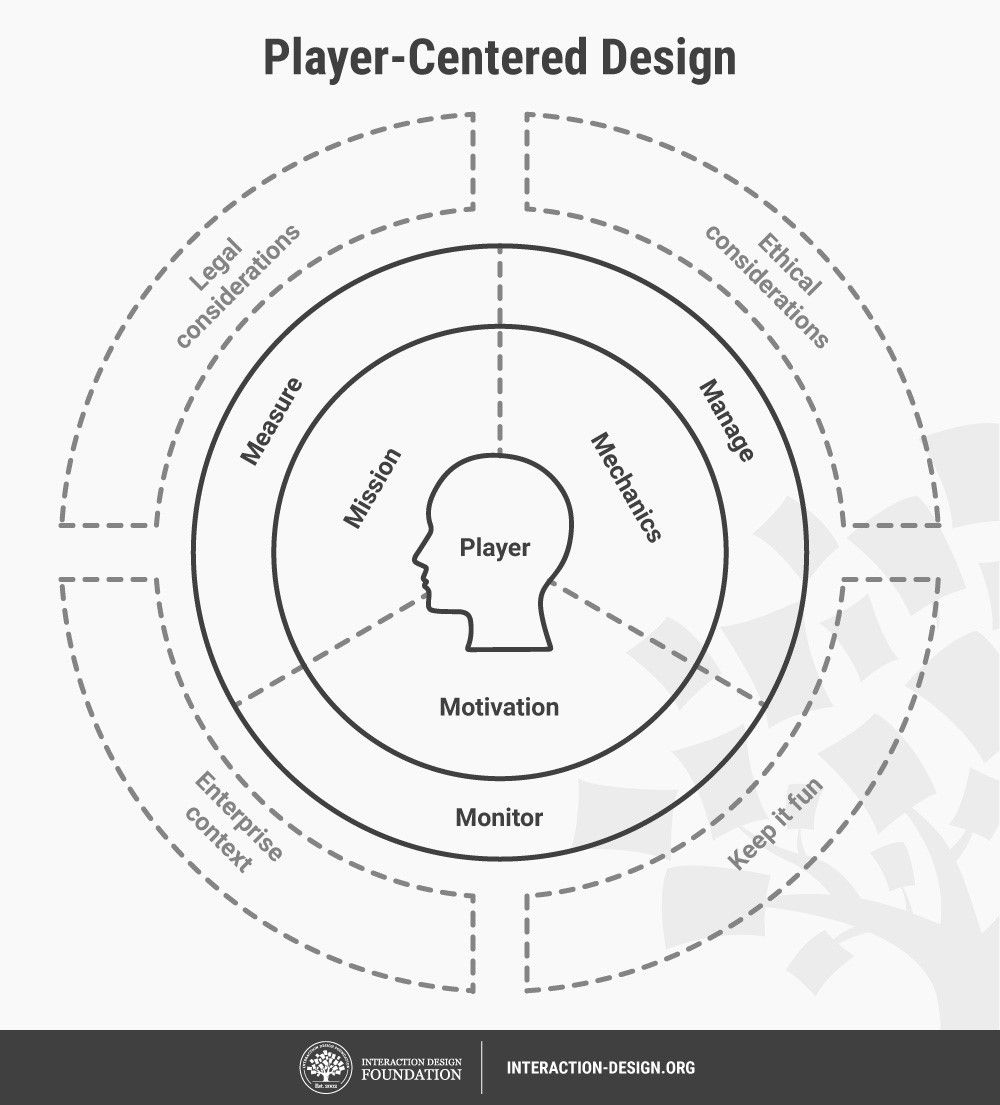What is Gamification?
Gamification is a technique which designers use to insert gameplay elements in non-gaming settings, so they enhance user engagement with a product or service. By weaving suitably fun features such as leaderboards and badges into an existing system, designers tap users’ intrinsic motivations so they enjoy using it more.
Learn more about how Gamification fits into user experience design:
“Games give us unnecessary obstacles that we volunteer to tackle.”
— Jane McGonigal, American designer and author
The Appeal of Gamification in User Experience (UX) Design
Gamification is a powerful tool to drive user engagement for several reasons. It’s not about transforming user interfaces into games. Instead, you use it to inject fun elements into applications and systems that might otherwise lack immediacy or relevance for users. When you do this right, you incentivize users to achieve goals and help them overcome negative associations they may have with the system and the tasks it requires them to complete. The dynamics designers incorporate in successful gamification themselves serve as effective intrinsic motivation. This means that users engage with the system because they want to. For instance, Foursquare/Swarm promotes users to “Mayors” of establishments after so many visits, enabling them to compete for top place while enjoying meals, shopping, movies, etc.
To inspire users by introducing gamification into an existing system, you should apply gameplay and the structure of rules and goals to “serious” or mundane tasks. You can gamify systems in many ways, from countdowns to encouragement for completing x percent of a task. People enjoy interactivity and satisfying their curiosity. Sometimes, you can use a suitable social element to increase their engagement.
The Challenge for UX Designers
Gamification is notoriously difficult. You should strike a cautious balance between the “fun factor” and the tone of the subject matter. Moreover, you must tailor the gameplay and the rewards precisely to the users. The degree of apparent gamification and the nature of trophy-like awards that are suitable for an app where friends compete won’t suit a corporate environment that prefers more subtle approaches. Simultaneously, you must fulfill certain user needs if “players” are to use the system without forcing themselves to. Such needs include:
- Autonomy – Users’ actions must be voluntary; you shouldn’t push them to adopt desired behaviors but instead insert subtle elements/prompts which they can find on their own and therefore feel in control of their experience.
- Relatedness – Users need to feel that your brand cares about what matters to them. Customizing your design’s content and tone to them are especially useful for fostering their loyalty.
- Competence – Related to autonomy, this need is about keeping users comfortable as they discover your design by never feeling overwhelmed or confused. For example, as users typically don’t like reading lots of text, you can use icons (e.g., a heart for “Save to Favorites”) or progressive disclosure.
Remember – you can’t force anyone to have fun! Question-and-answer service Quora, which awards credits while linking like-minded people, is an example of how to fulfill relatedness.
Here at the Interaction Design Foundation, we also use gamification to increase our course-takers’ intrinsic motivation for putting their best effort into their courses.
Major Gamification Pitfalls:
- Manipulation – Gamification is about motivating users by enabling them to have fun, not tricking them into doing things.
- Building a Game – If you overdo the game features, you’ll defeat the purpose of incentivizing users to complete real-world tasks.
- Magic Paint – The system you’re gamifying must be good per se. If it’s subpar, gamification cannot make it a success.
Getting Gamification Right
To get gamification right, it’s vital to know both the users and exactly how they should fulfill the goal or purpose of your gamified design, every step of the way. You also should understand that motivations will vary according to the task, objective and player. Likewise, the gamification mechanics must suit the users. So, when you choose to implement a leaderboard, points system, relationship-based approach, badges, etc., you should:
- Enhance the experience from the users’/players’ viewpoints by inserting the right gamification mechanics – First, do UX research to pinpoint who those “players” are and understand how they see their world. For instance, does their work environment suit a challenge-oriented experience with points, awards and competition? Or how about time constraints to complete the boring tasks and compulsory e-learning? Or might these seem adversarial and demotivate some users? Would a more discreet approach with elements of a journey of discovery and private personal achievement markers work best? From your research, you can create personas to help understand likely player types. From there, you can tailor a system that’s right for all stakeholders involved.
- Evaluate your design to monitor its effectiveness in bolstering user engagement – usability testing is invaluable here.
A successful project is one that covers both aspects—namely, to increase engagement through pleasurable activity and satisfy the bigger picture, the original purpose for the design. Overall, gamification is an experience you should “weave” carefully into an existing system, not a feature you insert.
Learn More about Gamification
You can learn much more about gamification and its uses in the Interaction Design Foundation’s online course: https://www.interaction-design.org/courses/gamification-creating-addictive-user-experience
Web interface designer Peter Steen Høgenhaug captures gamification with a variety of examples and insights: https://www.smashingmagazine.com/2012/04/gamification-ux-users-win-lose/#sec2
Find examples of gamification done right – here: https://www.creativebloq.com/web-design-tips/5-examples-of-great-gamification-1233261
Explore some mechanics of gamification at a glance – here: https://uxplanet.org/gamification-in-ux-increasing-user-engagement-6437cbf702aa
We are here to help you. Say hello


